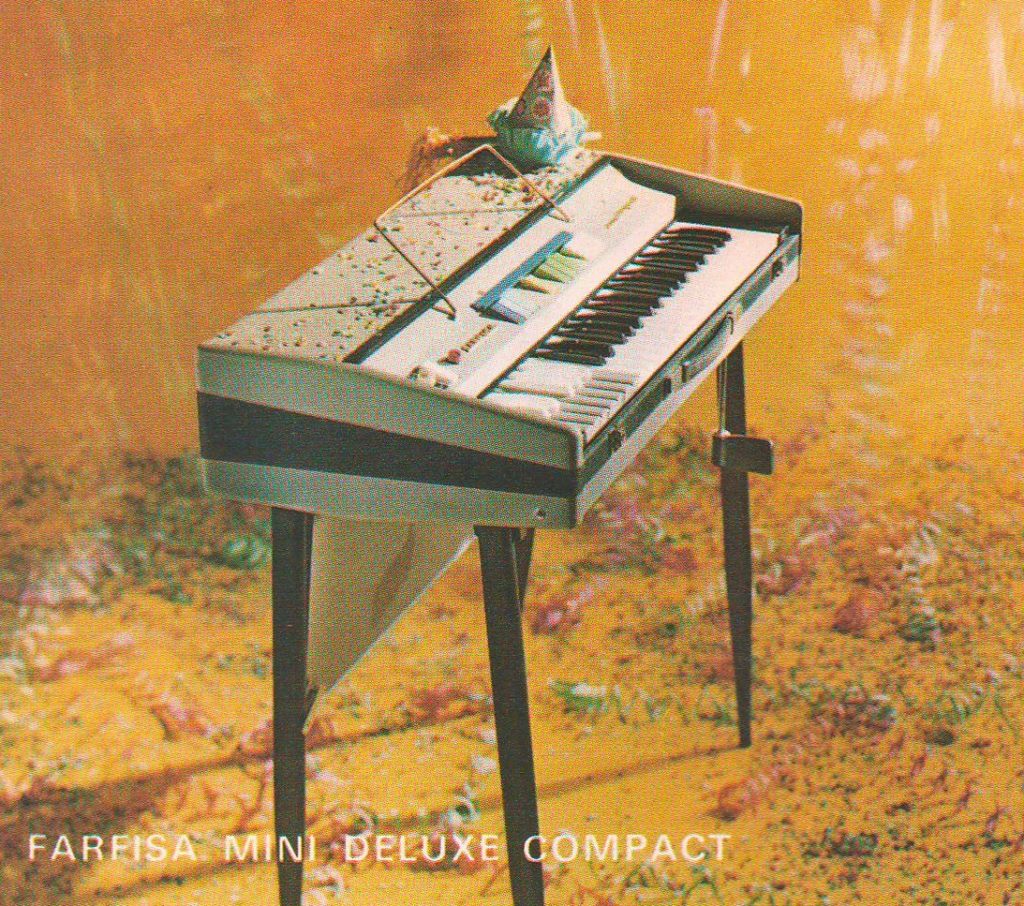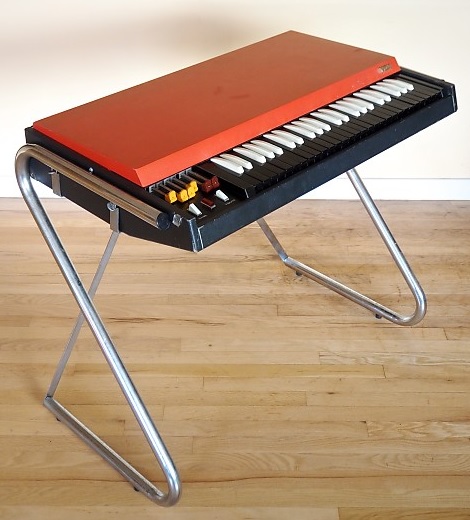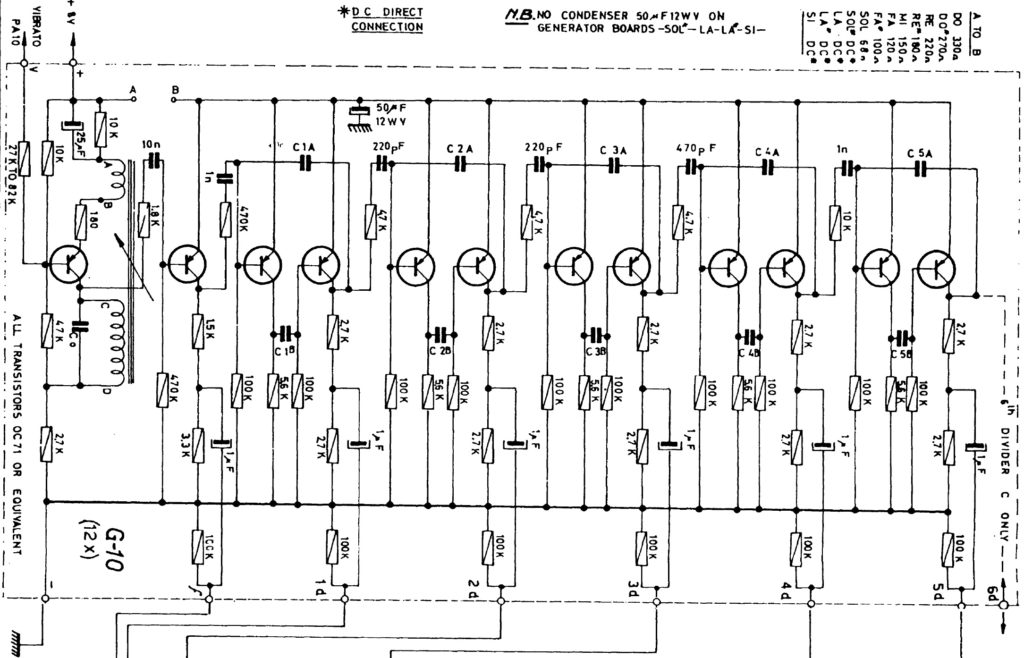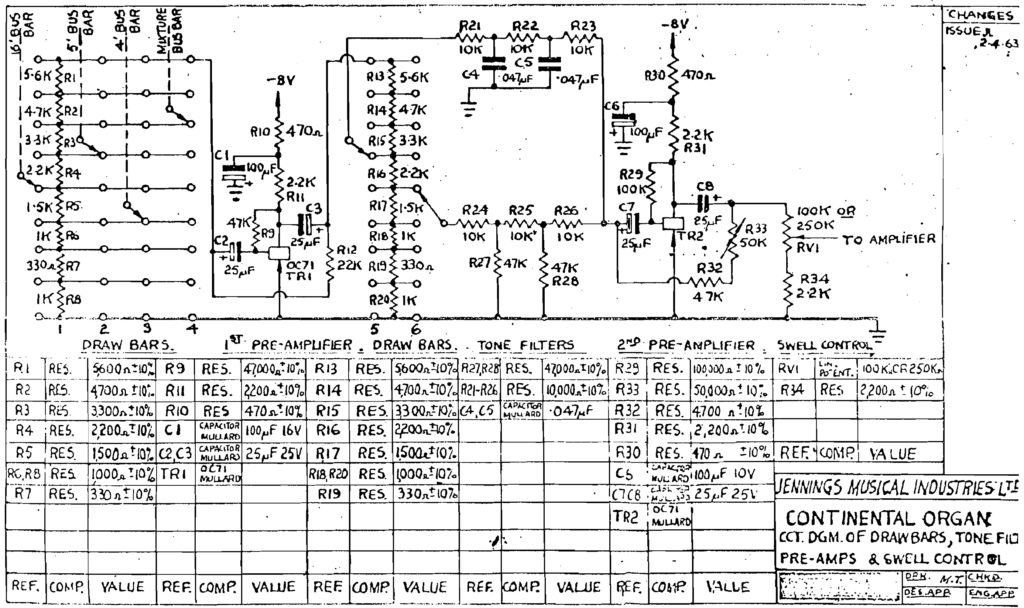Combo organs got me into this mess. 🙂
Back in the day, I played a Farfisa Mini Compact Deluxe. Even though it didn’t have many tabs or reverb, it was enough to cover Wooly Bully and the rest of the Top 40 hits. I always wanted a Vox, but the Jaguar and Continental were always out of my financial reach.

Farfisa and Vox each had their own distinctive tone. The Farfisa is raspy and nasal. The Vox is brighter and more cutting. Farfisa offered more vibrato options while Vox is just ON/OFF. Either one could quease (or cheese) your stomach when overdone. 🙂

There are several great on-line resources if you would like to know more about Farfisa, Vox and some of the lesser competitors (e.g., Gibson, Fender, Acetone). My two favorite sites are Combo Organ Heaven and The Vox Showroom. It’s also fun to browse E-bay and Reverb.com for vintage organ gear and spare parts. I also recommend the book “Classic Keys” by Alan S. Lenhoff and David E. Robertson.
Internally, the 1960’s Vox and Farfisa models employed tone generation boards — one board for each of the twelve semi-tones in an octave. Each board consisted of an oscillator for the highest pitch (e.g., C6) and dividers for the corresponding pitches one or more octaves down (e.g., C5, C4, C3). A schematic for the Farfisa Mini Compact Deluxe tone generator board is shown in the picture below.

The oscillator is, essentially, a square wave generator and the divider stages are a ripple carry counter. The square wave generator feeds the counter and each stage of the counter divides down by a power of 2, thereby producing the lower octaves. The square wave generator is on the left with five divider stages arrayed to the right.
Each board has different capacitor values (C1A to C5A) depending upon base pitch (C to B). The generator is tuned by a variable inductor coil. This darned coil was delicate back in the 1960’s and cost me an expensive repair when I tried to tweak the F# tuning. If you’re contemplating ownership of such a vintage instrument, don’t suffer delusions about the fixing and maintaining a vintage beast. Sixty or seventy years on, these critters are difficult to maintain.
Once the basic tones are generated, they are sent through a rat’s nest of wires comprising the key and bus bar switching network. Then, the individual (bus bar) signals are mixed and go to filters. Farfisa and Vox have different filters, giving each brand a distinctive voicing flavor. Farfisa routed its signals into a switched passive filter network while Vox sent its signals into drawbars. The Farfisa filters are switched in and out by the front-panel voice tabs while the Vox allows a mix of flute and reed tones. The Vox Jaguar employed an approach similar to Farfisa (tabs), letting Vox offer a cheaper alternative to the Continental.

The picture above shows the Vox Continental drawbar schematic. Key contacts switch signals onto four bus bars: 16′, 8′, 4′ and Mixture. The four main drawbars (1, 2, 3, and 4) mix the incoming ranks into a single signal which goes to the so-called sine and reed drawbars (5 and 6). Drawbar 5 filters the incoming square waves producing a sine-like, flute tone. Drawbar 6 doesn’t filter the incoming square waves and produces a brighter, reed tone.
If you would like to know more about Farfisa and Vox internals, I recommend getting acquainted with ElectroTanya. ElectroTanya is an on-line server providing service manuals for current and old gear. You can download up to five service manuals for free each day. The user interface is a little funky, but ElectroTanya is a terrific resource for out-of-print manuals. Here are links to the keyboards mentioned in this blog post:
Please keep these designs in mind. The oscillator/divider approach gave birth to the top-octave tone generator design that reduced the cost and complexity of organ tone generator boards. Thank you large scale integration (LSI).
Martinec wrote two of the best free combo organ VST emulations ever: Combo Model F and Combo Model V. You can still find copies of the Martinec VSTs on the Web. Get your combo groove on!
Arduino people should check out my sampled 60s Combo Organ (MidiVOX). I managed to get four voice polyphony out of an Arduino! Lo-fi heaven.
Copyright © 2021 Paul J. Drongowski
